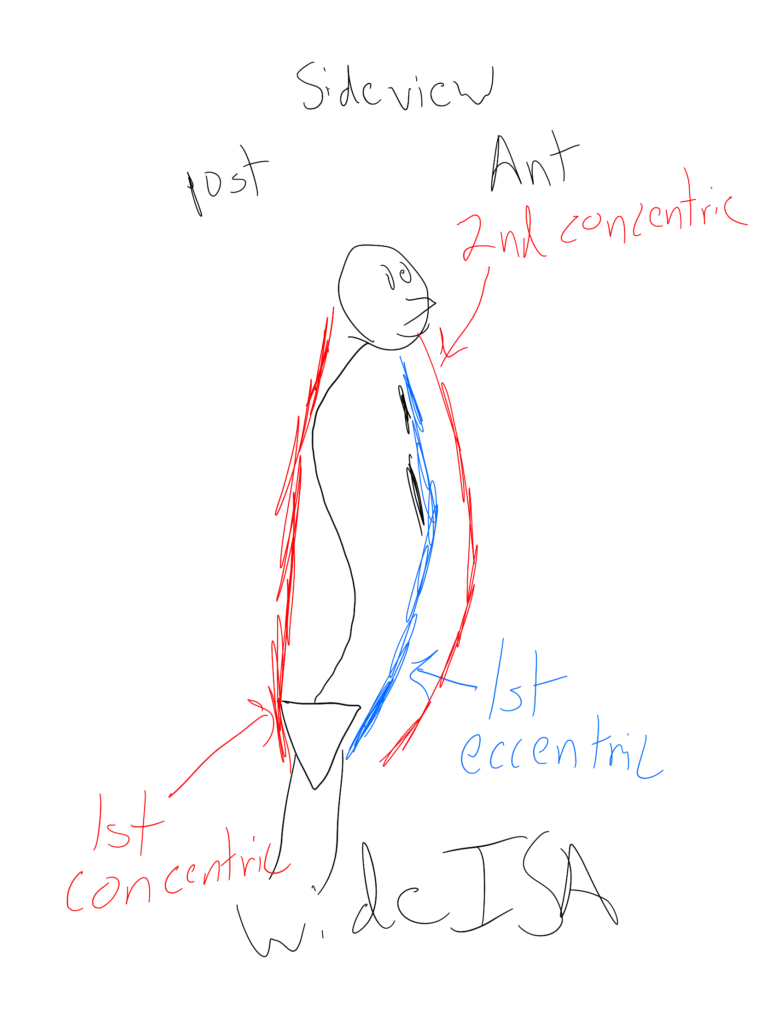Table of Contents
Learn what range of motion testing really tells you
Movement Debrief Episode 123 is in the books. Below is a copy of the video for your viewing pleasure, and audio if you can’t stand looking at me.
Here is the setlist:
- Are standing postural assessments useful?
- What are the best assessments to use online?
- Does it differ if you are a trainer or clinician?
- How do I make decisions based off of table tests?
- What does it mean when someone has clear table tests but is limited in standing measures?
- What’s the difference between a Thomas test and an ober’s test?
- How does one determine if someone has ligamentous laxity or not?
If you want to watch these live, add me on Instagram. Enjoy!
and the audio version:

 t
tShow notes
Check out Human Matrix promo video below:
Below are some testimonials for the class:
Want to sign up? Click on the following locations below:
August 1st-2nd, Boston, MA (Early bird ends July 5th at 11:55pm!)
September 12th-13th, Montreal, Canada (Early bird ends August 16th at 11:55pm!) [6 CEUs approved for Athletic Therapists by CATA!]
October 3rd-4th, Ann Arbor, MI (Early bird ends September 6th at 11:55pm!)
November 7th-8th, Charlotte, NC (Early bird ends October 11th at 11:55pm!)
November 21st-22nd, San Diego, CA (Early bird ends October 25th at 11:55pm!)
May 1st-2nd, 2021, Minneapolis, MN (Early bird ends April 4th at 11:55pm!)
Atlanta, GA (POSTPONED DUE TO COVID-19)
Dickinson College in Carlisle PA (POSTPONED DUE TO COVID-19) [Approved for 14 Category A CEUs for athletic trainers]
Or check out this little teaser for Human Matrix home study. Best part is if you attend the live course you’ll get this bad boy for free! (Release date not known yet 🙁
Here is a signup for my newsletter to get nearly 5 hours and 50 pages of content, access to my free breathing and body mechanics course, a free acute:chronic workload calculator, basketball conditioning program, podcasts, and weekend learning goodies:
[yikes-mailchimp form=”1″ submit=”Get learning goodies and more”]
Bill Hartman – He’s done some amazing things for expanding how we look at movement, and you should follow him!
The Guide to Remote Coaching – This is my post where I outline essentially the starter kit to working with people remotely.
Interpreting Lower Body Assessments – This debrief outlines various tests such as the straight leg raise, hip flexion, and more.
Here is a picture that looks at compensatory strategies in layers:

Hip Rotation Explained – If you want to beef up your understanding of what hip rotation measures actually mean, this is the post
Introduction to Orofacial Myofunctional Therapy Course Review – If you want to learn about upper airway and orofacial evaluations and treatments, this is the post
If you want a great move to improve your cervical rotation and upper thorax expansion, check out this exercise:
The modified Thomas test is not a valid measure of hip extension unless pelvic tilt is controlled – This study outlines the pitfalls of using the Thomas test as an assessment. One reason why I quit using it.
Bryan Chung – He is the creator of Critical Mass, which is an excellent product to learn how to appraise research. He’s a great thinker and you have to check him out.
TrueCoach – This is the app I use for all my training clients. I love the organization and ease of use.
Postural assessment
What online tests can a trainer use?
Would you be interested in doing a video on what the best practices, tests a trainer can do for their online clients?
Making decisions based on table tests
I definitely like to learn more about how you make decisions based on table testing. Specifically, if an individual has some but not all of an inhalation or exhalation measure (i.e possesses full shoulder flexion and ER, but does not have full abduction), does your intervention change?
Hey Zac! When you identify if someone is compressed A-P, do you address bucket handle, primary compensation, and secondary compensation in that order?
Excessive shoulder mobility compensations
On the table, if you have someone seems to breeze your shoulder rotation evaluations, but struggles on the toe touch and squat. What kind of secondary compensations could you conclude from that?
The difference between a Thomas Test and an Ober’s Test
Can you have a narrow have positive ober test, but negative Thomas test? Can’t adduct, but can extend.
How to determine ligamentous laxity
How would you determine if someone has ligament laxity?
Sum Up
- Table tests are better indicators of within-session changes compared to postural evaluations.
- The most impactful remote tests for me are infrasternal angle and hip flexion
- Wide infrasternal angles should address extension/adduction/internal rotation restrictions before flexion/abduction/external rotation restrictions.
- Narrow infrasternal angles should address flexion/abduction/external rotation restrictions before extension/adduction/internal rotation restrictions.
- Excessive shoulder range of motion is often the result of reduced cervicaocranial restriction.
- The Thomas Test is an unreliable test unless pelvic tilt is controlled. The ober’s test is a better marker for assessing full extension, adduction, and internal rotation excursion.
- Laxity is secondary to eccentric orientation of tissues.
